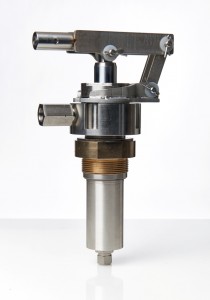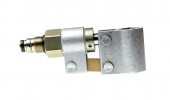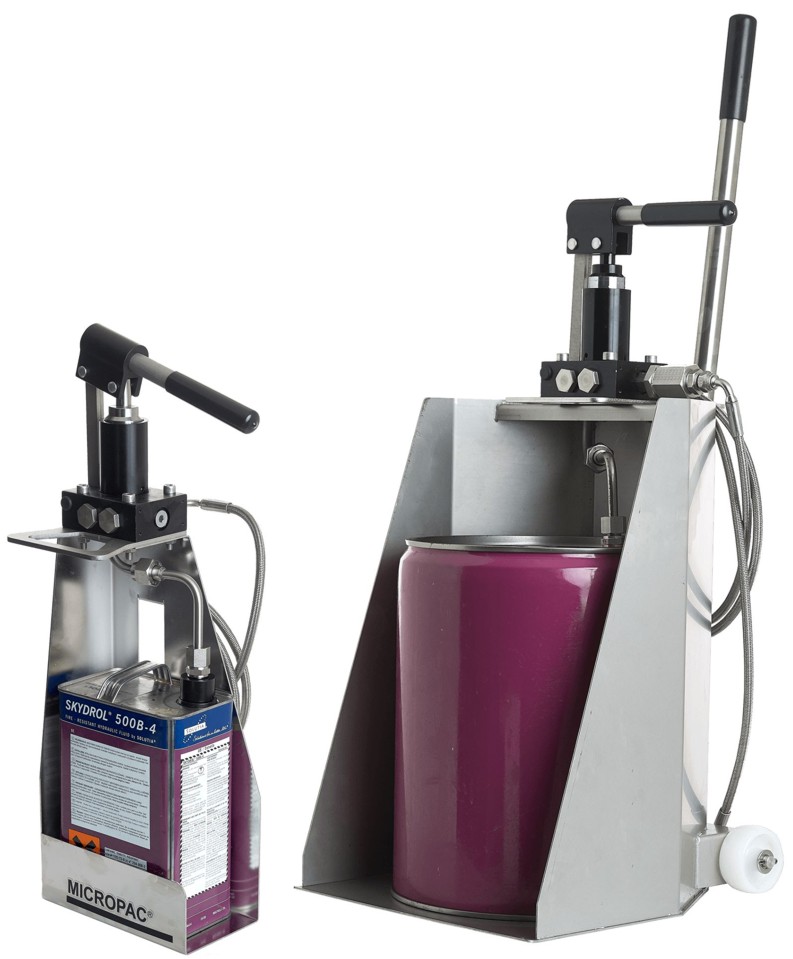Why wouldn’t you look at low pressure hydraulics first?
Think low pressure hydraulics! When designing a one off hydraulic system or for that matter a new piece of OEM hydraulic equipment, I suppose it is temping to dive straight into 250 bar components and techniques which are just everywhere. On some OEM hydraulics, you might move straight to 400 bar or even to 700 bar working pressure, particularly if you are using parts from other products in your range of equipment.
Why would you not step back for a moment and see whether a low pressure hydraulic system could hang together? There are a surprising number in niche OEM applications that really work rather well. Quite often, you can see that it stacks up on cost compared with trying to do the same thing at higher pressure. Down at 20 bar, you are using pneumatic design and even up at 40 or 60 bar there are angles in making stuff low tech. Valves are pneumatic technology, not high pressure hydraulics and the pump can even be akin to a vending machine solenoid unit rather than a gear or piston pump and electric motor.

“Won’t the hand pump be pumping for ever?”: For low pressure systems, a Micropac MB 100cc hand pump gives the higher flow rates needed.
“Won’t the power or hand pump be pumping for ever?” Whether you are pumping a large volume to low pressure or a small volume to high pressure, the energy is still the same to do the job. Where you notice the difference straight away is in the space envelope of actuators and the fluid reservoir. Although the working pressure may be low and cylinders can be alloy or plastic, diameters can be large.
So what are the pointers to successfully using low pressure hydraulics?
If the forces are not enormous and you are very nearly seeing a problem as making a pneumatic sized system for hydraulic operation, you can have a strong concept. For example, using hard anodised extruded aluminium alloy cylinder section can offer dramatic savings even if your working pressure is limited. As well as the main bore, you might extrude in external features or an additional flow path. If you look at Suspa worktop levelling systems, they cleverly integrate four single shot hydraulic pumps into one alloy pump assembly with all four piston rods run off a single crank to keep each ram in sync. Their cylinders are similarly manufactured from alloy. There is a certain elegance in this design. We know from the likes of SMC how slick hard anodised alloy cylinders based on extrusions can be.
Just keep in mind some advantages in low loads on pump piston rods. Suspa are running their four rods from a single leadscrew, something that is probably much more difficult at higher pressures. Sarum Hydraulics offers a couple of very neat knob actuated cartridge pumps which are very inexpensive and such an easy fix for lower pressures and a small space envelope.
If conventional hydraulic hoses with swivels are the hassle in higher pressure systems, stepping back and piping a system up in small bore nylon tubing is a decisive thing to do, especially where runs are tortuous, costs need to be low or tubes need to be threaded through small holes and tight radii. Remember that you can source high pressure nylon tube and that Wade type fittings will provide very low tech connections. Whether it is the Suspa levelling system or Bennett powerboat trim tabs, being able to use nylon pipe work seems to be an important angle.
Whilst reflecting upon innovative cylinder design for lower pressure hydraulics, the Bennett trim tab uses a moulded plastic cylinder barrel with the pivot as a flexure in the same moulding. In this equipment, the whole job is very inexpensive and because loads are relatively low, Bennett have engineered a clever low pressure hydraulic system.
Does low pressure make a system more dependable? I suppose instinctively you would say yes. If there is a failure, the leak will probably be less spectacular, although a leak is still a leak.
If you are into an OEM product integrating a ram and pump, keep in mind the BFT electro hydraulic door and gate opener as an example of how slick and inexpensive this can be. Again, the low pressure route has worked for this Italian design.
Even for larger volumes, low pressure hydraulics can work really well, for example as in the Rotork Skilmatic actuator. Here an integrated low pressure pump and optional manual over ride pump provides a very highly respected valve actuator.
Would a lot of these products be designed as electric units today? Maybe electric units are easy to make in China in big numbers and mighty easy to install. However, hydraulics still offers a very rugged solution that allows easy manual over ride. A lot of designers simply prefer the remote pump that hydraulics can offer rather than running power to individual electric actuators.
Sarum Hydraulics are the Micropac hydraulic hand pump experts. High pressure, low pressure, low corrosion and tricky fluids. We know our hand pumps. See what we do on www.sarum-hydraulics.co.uk.
UPDATE 10/08/16: We’ve revisited this blog idea and answered your 7 biggest questions on low pressure hydraulics here.






i am looking for a low pressure tensioner to tighten a 2mm diamond wire without snapping it.